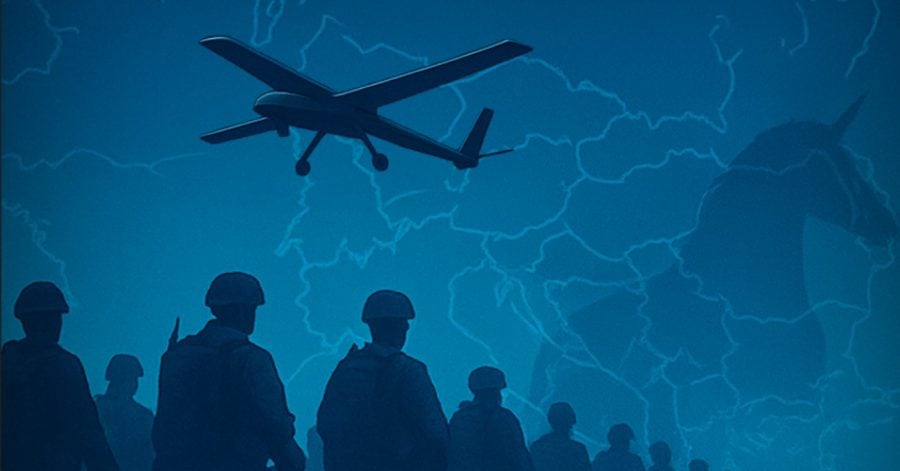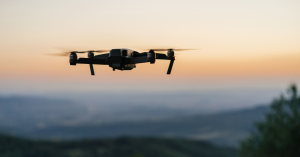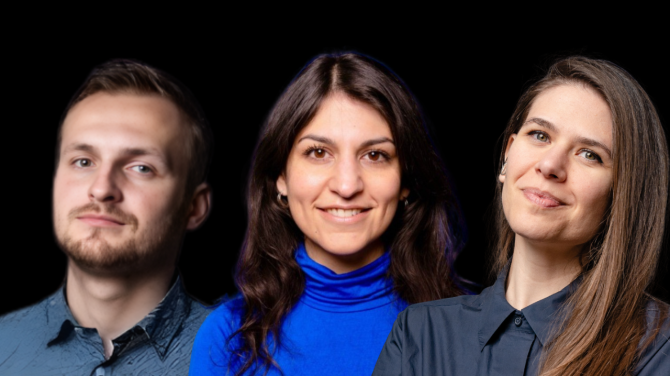In the war-torn fields of Ukraine, the reality of modern warfare is changing. Traditional military doctrines, built around mass mobilization and manpower, are being rewritten by engineers and coders. The frontline has become a testing ground for drone swarms, electronic warfare, battlefield AI, and autonomous systems. Ukraine’s military, vastly outnumbered, is fighting a war it cannot win with manpower alone.
The new doctrine is stark and urgent: we need tech, not men, on the battlefield.
We need tech to save the men.
This shift is being shaped daily by soldiers and engineers. We spoke with three people at the heart of this transformation: a defense-tech founder building systems under fire, who wished to remain anonymous (we’ll call them B.); Yurii, a frontline officer in Ukraine’s 3rd Assault Brigade; and Andrii Buzarov, Ukrainian political analyst and legal advisor.
“You’ll Never Match Russia’s Manpower – So Don’t Even Try”
“We’ll never have enough people to match Russia’s approach to warfare, especially large-scale, manned assaults,” says B. “So we must focus on asymmetrical weapons to level the playing field.”
Russian forces, B. notes, have enormous drone-manufacturing capacity and sophisticated electronic warfare systems. “They’re not incompetent. They’re adapting fast. We have to match their pace — and then exceed it.”
The problem, B. explains, is that most current innovations are linear: detect a drone’s frequency, jam it, wait for them to change it, and start over. “It’s a cat-and-mouse game. A reactive cycle. But real victory comes when you break that loop — when you build systems that adapt faster than the enemy can think,” says B.
For them, the goal is to move from hacking one protocol to building tools that can hack any protocol, in real time.
“That’s what I call an asymmetrical weapon. It’s not about killing more — it’s about making the enemy’s tools irrelevant,” adds the tech founder.
And yet, much of today’s defense innovation, B. warns, is dangerously disconnected from battlefield realities. “You can’t build effective defense tech from outside Ukraine, or without military people on the team. You’re just building something and hoping it works. That’s not enough.”
“You Don’t Learn to Fight with Drones in School”
Yurii, a senior officer in Ukraine’s 3rd Assault Brigade, echoes this perspective from the front line.
“Most of the people who join the military today are learning in the field. That’s where the real, critical, hands-on knowledge comes from,” he explains. “We’re trying to train new people as fast as we can — but the battlefield moves faster.”
When asked what Ukraine needs the most right now, his answer is clear: “Autonomous systems. That’s how we survive the asymmetry in manpower, equipment, and even strategy.”
UAVs are one success story, most of them produced locally. By April 2025, Ukraine’s Deputy Defense Minister Valerii Churkin stated that over 95% of drones “currently used at the front line” were Ukrainian-made. But even these take time to deploy.
Despite talk of lightning-fast innovation cycles, Yurii is skeptical. “Two weeks? That would be a dream. We’re working hard to shorten that loop — but real battlefield deployment takes time.”
The biggest obstacle isn’t technical, it’s practical. “If you don’t design tech with soldiers from the start, it won’t work. It might be brilliant in theory but useless in practice. Developers need to see how we fight, how we charge devices, how terrain affects performance.”
That’s why his brigade works directly with startups and engineers — to test, break, and improve systems in combat. “The faster that loop from lab to trench, the more lives we save,” explains Yurii.
“You Can’t Regulate War After the Fact”
But as these technologies explode in scope and speed, ethical and legal questions follow closely behind. “Governments can’t afford to be reactive anymore—they need to be proactive,” says Andrii Buzarov.
“The battlefield is already filled with experimental AI and drone systems. But laws haven’t caught up.”
He sees great potential in AI and autonomous tools for training, support, and even logistics; but warns against letting automation override human judgment. “AI follows pre-programmed steps. It can’t improvise. It can’t be ethical and reason things. That’s why I believe AI should support soldiers — but never fully replace them in critical decisions.”
Most crucially, he says, autonomous weapons should be treated with the same caution as chemical or biological arms.
“We need global legislative frameworks — fast. What’s being tested in Ukraine today could be in any conflict tomorrow.”
Redefining what it means to fight
The idea “tech, not men” isn’t about removing humanity from war. It’s about saving it. It’s about designing smarter ways to defend freedom, especially when facing an enemy that treats soldiers as expendable.
Ukraine doesn’t have the manpower to win a war of attrition. But it does have the ingenuity to fight smarter, faster, and more surgically. And that ingenuity, if supported with resources, regulation, and real-time battlefield collaboration, could shape a new model for 21st-century defense.
“You win not by matching the enemy — but by making their strengths irrelevant,” says the founder.
In this new world, success won’t be measured by battalions deployed or tanks destroyed. It will be measured by how fast a drone was adapted, how accurately a signal was intercepted, and how intelligently a system responded — before a human even had to act.
This is not science fiction. It’s the war unfolding now.
And in that war, the side that puts engineers’ wits on the front line will win.
This article is part of The state of defense and cybersecurity tech in CEE. Download the full report here!








